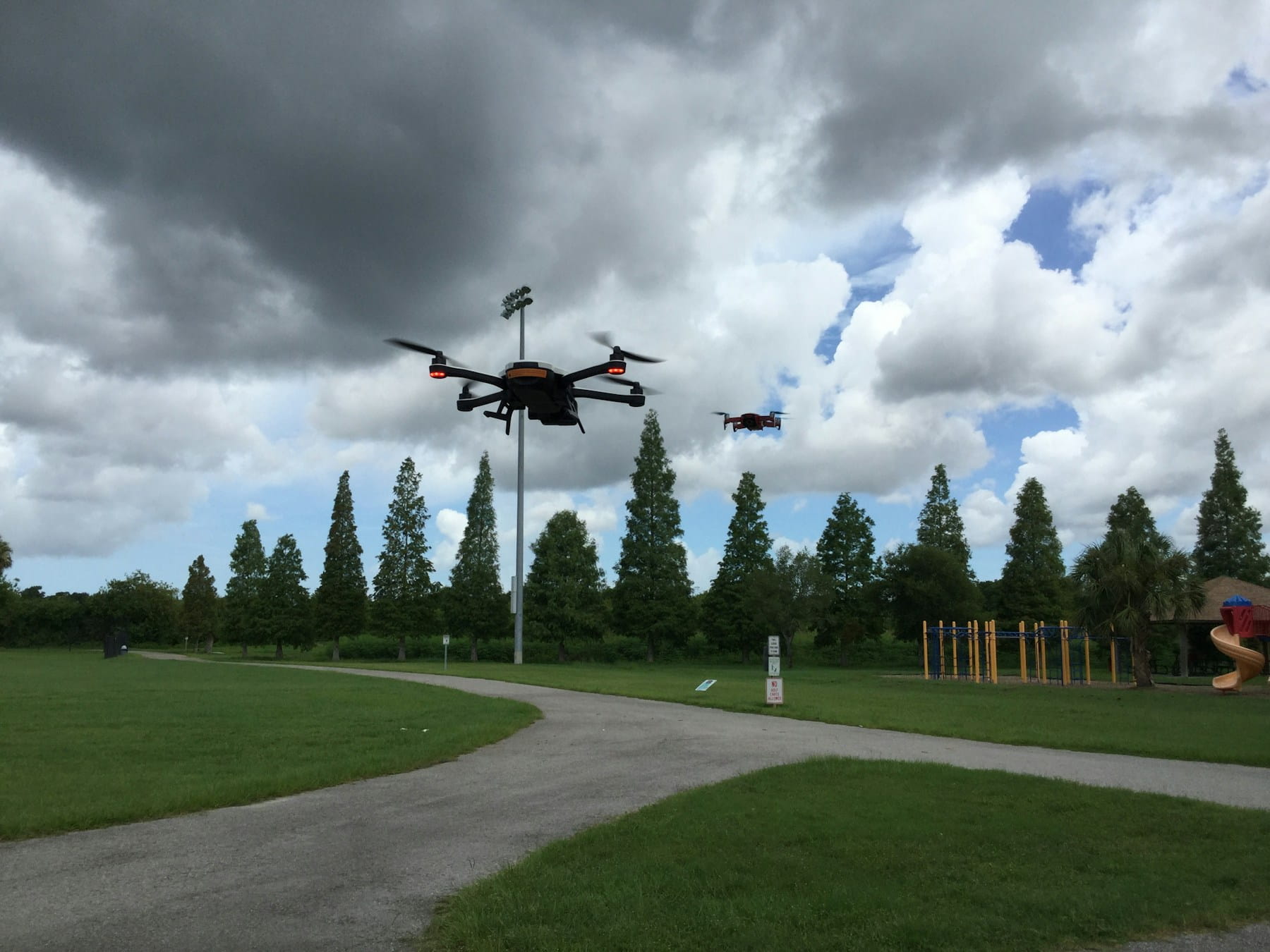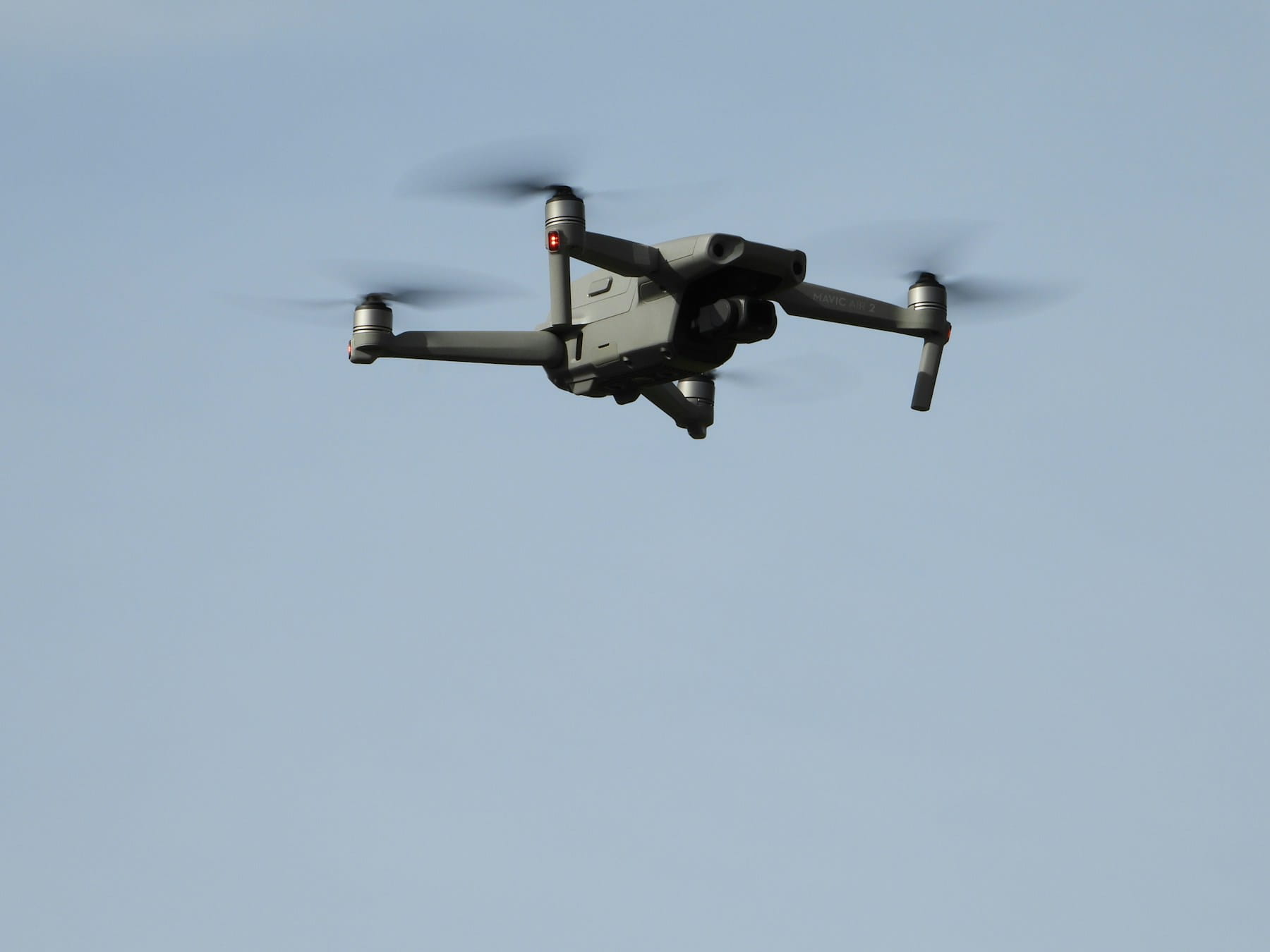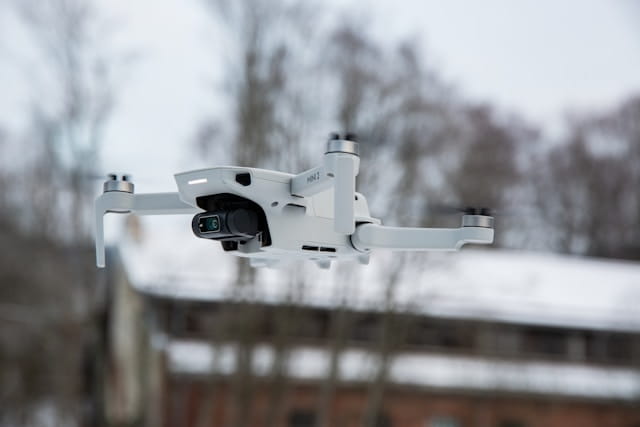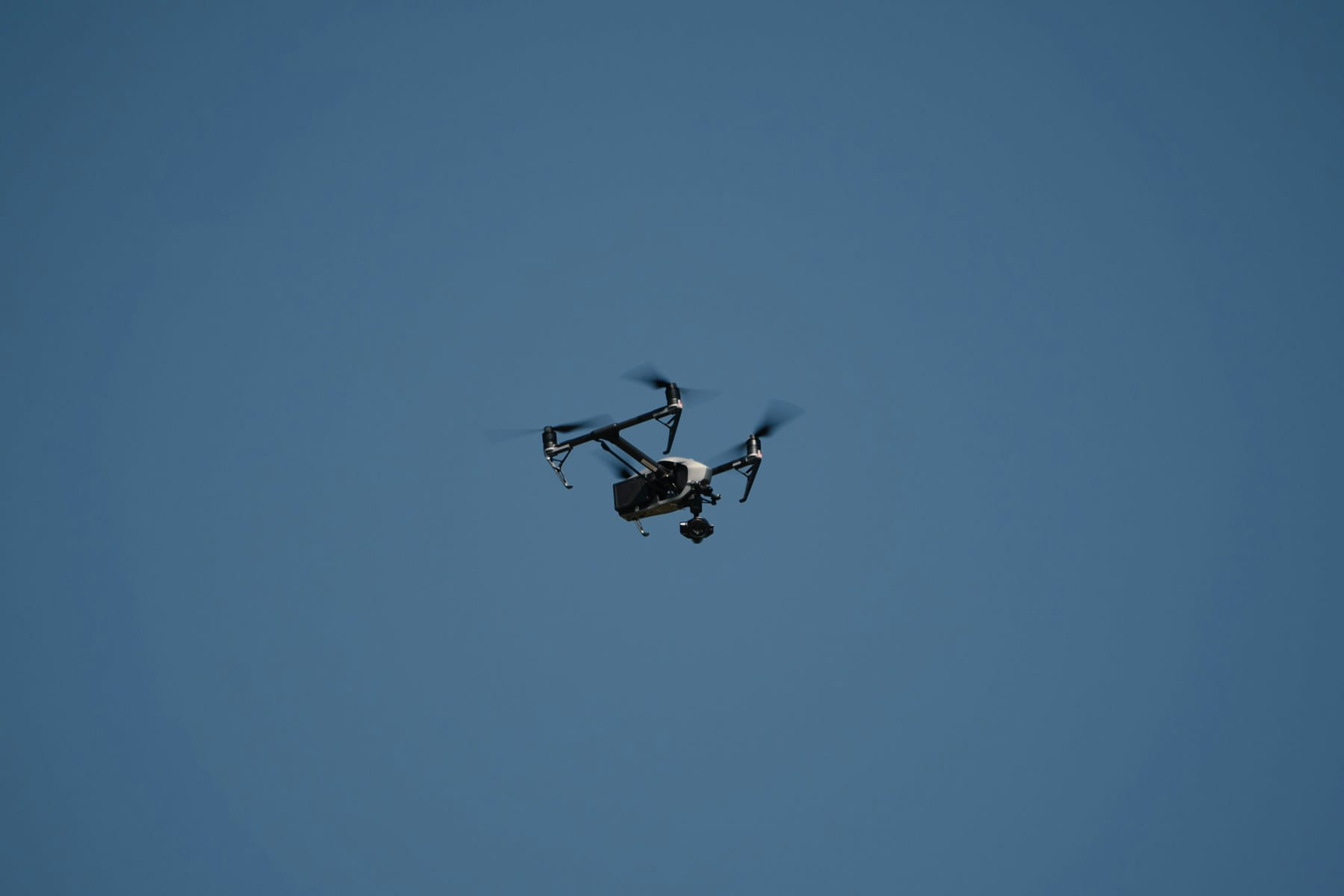Discover comprehensive drone operations software that streamlines mission planning, real-time monitoring, compliance, and fleet management for commercial UAV operations, ensuring efficiency, safety, and regulatory adherence.
Commercial drone operations have grown far beyond simple recreational flights. Professional pilots and fleet operators need robust systems to handle everything from pre-flight planning to post-mission compliance reporting. The right software platform can make the difference between a smooth operation and regulatory headaches.
Picture this: you're managing a fleet of 15 drones across multiple operators. Pilot certifications are expiring at different times, maintenance schedules overlap, airspace restrictions change daily, and clients demand detailed compliance documentation. Managing all this through spreadsheets and manual processes creates chaos—missed deadlines, compliance gaps, and operational inefficiencies that cost time and money.
But choosing drone operations software isn't just about picking the flashiest interface or the cheapest option. It's about finding a platform that scales with your operation, keeps you compliant, and actually saves time rather than creating more work.
Table of contents
- What is drone operations software?
- Key features every platform should include
- Pre-flight planning capabilities
- In-flight monitoring and control
- Post-flight management and reporting
- Compliance and regulatory features
- Fleet and personnel management
- Data security considerations
- Industry-specific requirements
- Platform deployment options
- Cost considerations and ROI
- Implementation and training
What is drone operations software?
Drone operations software serves as the central nervous system for commercial UAV programs. These platforms coordinate every aspect of drone deployment, from initial mission planning through final data analysis and regulatory reporting.
Think of it as mission control for your entire fleet. The software tracks which drones are available, which pilots are current on their certifications, what the weather looks like at your target location, and whether you have all the necessary permissions to fly.
Modern platforms integrate multiple data sources and automate many of the tedious tasks that used to eat up hours of an operator's day. Instead of manually checking airspace restrictions, weather reports, and maintenance schedules across different systems, operators can access everything through a single interface.
The best platforms don't just store information—they actively help prevent problems. They'll flag expired pilot certifications before a mission, warn about approaching maintenance intervals, and automatically generate the documentation needed for regulatory compliance.
Key features every platform should include
Not all drone operations software is created equal. Some platforms focus heavily on flight planning while neglecting maintenance tracking. Others excel at compliance reporting but offer weak fleet management tools.
The most effective platforms provide comprehensive coverage across all operational areas. Here are the non-negotiable features that any serious commercial operation needs:
Mission planning and approval workflows form the foundation of safe operations. The software should allow operators to plan flights, submit them for approval when required, and automatically check for conflicts with airspace restrictions or other scheduled operations.
Real-time airspace integration keeps operators informed about temporary flight restrictions, NOTAMs, and other dynamic airspace changes that could affect their missions. Understanding airspace classifications and no-fly zones prevents violations. This data should update automatically rather than requiring manual checks.
Weather integration provides current conditions and forecasts for planned flight locations. Integration with METAR reports helps interpret aviation weather data. The platform should flag potentially hazardous conditions and suggest alternative timing when appropriate.
Equipment and maintenance tracking monitors the status of drones, batteries, sensors, and other equipment. Systematic maintenance protocols ensure reliability. This includes flight hours, cycle counts, inspection schedules, and repair histories. Fleet maintenance management becomes critical as operations scale.
Personnel management tracks pilot certifications, training requirements, and flight currency. Pilot training programs ensure professional competency. Tracking flight hours helps maintain currency requirements. The system should proactively alert supervisors when renewals or additional training are needed.
Flight logging and data storage automatically capture flight details, telemetry data, and any media collected during missions. This information should be easily searchable and exportable for analysis or compliance purposes.
Pre-flight planning capabilities
Effective pre-flight planning separates professional operations from amateur efforts. Good software doesn't just help you plan—it helps you plan better by surfacing information you might otherwise miss. Comprehensive flight planning strategies and mission planning workflows improve efficiency and safety.
The planning interface should allow operators to define flight paths using waypoints, boundaries, or imported mission files. More sophisticated platforms support automated pattern generation for common mission types like surveys or inspections.
Airspace checking happens automatically as you define your mission area. The software should overlay restricted zones, temporary flight restrictions, and any special use airspace that might affect your operation. Some platforms even check for conflicts with other scheduled drone operations in the area.
Risk assessment tools help identify potential hazards and mitigation strategies. These might include proximity to airports, populated areas, critical infrastructure, or environmentally sensitive locations. Systematic risk assessment procedures and SORA frameworks support professional operations. The platform should guide operators through a standardized risk assessment process rather than leaving it entirely to individual judgment.
Weather analysis goes beyond basic conditions. Professional platforms provide wind speed and direction at different altitudes, visibility forecasts, and precipitation probability. Some include specialized meteorological data like atmospheric stability or turbulence indices.
Equipment selection and pre-flight checks ensure the right tools get assigned to each mission. The software should verify that selected drones and sensors are available, properly maintained, and suitable for the planned operation. Standardized pre-flight checklists improve consistency across operations.
Documentation generation creates the paperwork needed for regulatory compliance and operational coordination. This includes flight authorization requests, site safety plans, and briefing materials for other personnel who might be involved in the operation.
In-flight monitoring and control
Once a drone launches, the software's role shifts from planning to monitoring and control. Real-time situational awareness becomes critical, especially for complex operations involving multiple aircraft or coordination with ground teams.
Live telemetry displays show aircraft position, altitude, speed, battery status, and other vital parameters. Flight data monitoring provides operational insights. Operators need to see this information clearly and receive immediate alerts if any values move outside acceptable ranges.
Video and data streaming capabilities allow remote monitoring of mission progress. This is particularly valuable for inspections or surveillance operations where real-time decision-making might be required based on what the drone observes.
Communication integration connects drone operators with ground teams, air traffic control, and supervisory personnel. Some platforms include built-in chat or voice communication tools specifically designed for coordinating drone operations.
Automated monitoring and alerting systems watch for potential problems and notify operators immediately. These might include low battery warnings, airspace violations, equipment malfunctions, or loss of communication links.
Mission modification tools allow operators to adjust flight plans in response to changing conditions or mission requirements. The software should support real-time waypoint changes, altitude adjustments, and route modifications while maintaining safety and compliance.
Emergency procedures and automated responses help manage crisis situations. The platform might trigger automatic return-to-home sequences, emergency landing procedures, or notification protocols when serious problems occur.
Post-flight management and reporting
The mission doesn't end when the drone lands. Post-flight activities often determine whether an operation was truly successful and compliant with regulations.
Flight data processing begins immediately after landing. The software should automatically import telemetry logs, flight paths, and any media collected during the mission. This data gets associated with the specific flight record for future reference.
Maintenance logging captures any issues observed during the flight and updates equipment status accordingly. If a drone experienced vibration, sensor problems, or other anomalies, this information feeds into the maintenance management system to trigger appropriate follow-up actions.
Media management organizes photos, videos, and sensor data collected during the mission. Professional platforms provide tools for reviewing, annotating, and sharing this content with stakeholders who need access.
Report generation creates standardized summaries of mission activities. These reports might be required by clients, regulatory authorities, or internal quality management systems. The software should automatically populate most report fields using captured flight data.
Performance analytics help operators identify trends and improvement opportunities. This might include analysis of flight efficiency, equipment reliability, pilot performance, or mission success rates.
Data archiving ensures that flight records remain accessible for the required retention period. Professional operations often need to maintain records for several years to meet regulatory or contractual requirements.
Compliance and regulatory features
Regulatory compliance represents one of the most challenging aspects of commercial drone operations. Rules vary by country, change frequently, and often require detailed documentation to demonstrate adherence. Comprehensive compliance management systems streamline regulatory tracking.
Automated compliance checking helps operators stay within regulatory boundaries. The software should understand current rules for different types of operations and flag potential violations before they occur. Understanding VLOS requirements, BVLOS operations, and Remote ID regulations ensures legal operations. This includes flight altitude limits, distance restrictions, operational time constraints, and pilot certification requirements.
Documentation generation creates the paperwork needed to satisfy regulatory requirements. Professional platforms can generate flight logs, maintenance records, personnel certifications, and operational reports in formats specified by aviation authorities.
Audit trail maintenance provides a complete record of who did what and when. This becomes critical during regulatory inspections or incident investigations. The software should track all system access, data changes, and operational decisions with timestamps and user attribution.
Multi-jurisdiction support accommodates operators who work across different regulatory environments. The platform should understand varying rules between countries, states, or regions and adjust compliance checking accordingly.
Regulatory update integration keeps the software current with changing rules. Aviation regulations evolve constantly, and operators need assurance that their compliance checking reflects the latest requirements.
Incident reporting tools help manage the unfortunate situations that sometimes occur despite best planning efforts. The software should provide structured incident reporting forms and maintain secure records for regulatory reporting and internal analysis.
Fleet and personnel management
As drone operations grow beyond single-aircraft hobbyist activities, managing multiple assets and personnel becomes increasingly complex. Professional platforms provide tools to coordinate these resources effectively. Fleet management systems become essential for scaling operations.
Aircraft inventory tracking maintains detailed records for each drone in the fleet. This includes serial numbers, configuration details, modification history, and current status. Operators need to know immediately which aircraft are available, which are in maintenance, and which are assigned to other missions.
Maintenance scheduling prevents equipment failures through proactive servicing. The software should track flight hours, cycle counts, and calendar-based maintenance requirements for each piece of equipment. Automated alerts notify maintenance personnel when service is due.
Personnel certification tracking monitors pilot licenses, training records, and currency requirements. Different types of operations may require specific certifications or recent experience, and the platform should verify that assigned personnel meet all requirements.
Resource allocation tools help optimize the assignment of aircraft and personnel to missions. This might include automated scheduling based on equipment capabilities, pilot qualifications, and availability constraints.
Performance monitoring tracks key metrics for both equipment and personnel. This data helps identify training needs, maintenance patterns, and operational efficiency opportunities.
Inventory management extends beyond aircraft to include batteries, spare parts, tools, and other equipment needed for operations. Professional platforms track quantities, locations, and condition status for all these items.
Data security considerations
Commercial drone operations often involve sensitive information about clients, facilities, infrastructure, or operational procedures. Protecting this data requires robust security measures built into the operations platform.
Access control systems ensure that only authorized personnel can view or modify specific types of information. This might include role-based permissions that limit access based on job functions or hierarchical approval processes for sensitive operations.
Data encryption protects information both in transit and at rest. Professional platforms use industry-standard encryption methods to prevent unauthorized access to flight records, media files, and operational data.
Audit logging tracks all system access and data modifications. This creates accountability and helps identify potential security breaches or inappropriate data access.
Backup and recovery procedures ensure that critical operational data remains available even if primary systems fail. This includes both automated backup processes and tested recovery procedures.
Physical security considerations address the protection of servers, network infrastructure, and client devices used to access the platform. Some operations may require on-premises deployment or specific geographic data storage restrictions.
Compliance with data protection regulations becomes increasingly important as privacy laws evolve. Professional platforms should provide tools to manage data retention, access requests, and privacy compliance requirements.
Industry-specific requirements
Different industries have unique needs that generic drone operations software may not address adequately. Understanding these requirements helps operators choose platforms that fit their specific use cases.
Public safety operations require rapid deployment capabilities, real-time communication integration, and specialized documentation for legal proceedings. The software might need to interface with dispatch systems, evidence management platforms, or emergency communication networks.
Infrastructure inspection operations need detailed asset management, defect tracking, and integration with maintenance management systems. Applications include cell tower inspections, power line inspections, wind turbine inspections, and general asset inspections. The platform should support structured inspection checklists and automatically generate work orders based on identified issues.
Agricultural operations require field management, application tracking, and integration with precision agriculture tools. The software might need to calculate coverage rates, track chemical applications, and generate reports for regulatory compliance or client billing.
Surveying and mapping operations need precise coordinate systems, data processing workflows, and integration with geographic information systems. Surveying applications and mapping workflows require specialized capabilities. The platform should support various coordinate reference systems and provide tools for quality checking survey data.
Security and surveillance operations require real-time monitoring capabilities, incident response procedures, and integration with broader security management systems. Site security monitoring demonstrates specialized applications. The software might need to interface with video management systems or access control platforms.
Construction operations benefit from progress monitoring, volumetric calculations, and project management integration. Construction site management and detailed construction inspections leverage operations software capabilities.
Commercial photography and videography operations need media management tools, client portal access, and billing integration. The platform should provide workflow tools for editing, client review, and delivery of final products.
Platform deployment options
Organizations have several options for how they deploy and access drone operations software. Each approach offers different advantages and trade-offs that operators should consider carefully.
Cloud-based platforms provide easy access from anywhere with internet connectivity. These solutions typically offer automatic updates, scalable capacity, and lower upfront costs. However, they require reliable internet connections and may raise data sovereignty concerns for some organizations.
On-premises deployment gives organizations complete control over their data and systems. This approach may be required for highly sensitive operations or organizations with strict data governance requirements. However, it typically requires more internal IT resources and may limit remote access capabilities.
Hybrid solutions combine cloud convenience with on-premises control by keeping sensitive data local while using cloud services for less critical functions. This approach can provide flexibility while addressing security concerns.
Mobile applications extend platform access to field personnel using tablets or smartphones. These apps should provide core functionality even when internet connectivity is limited or unavailable.
Integration capabilities allow the platform to connect with other business systems like customer relationship management, enterprise resource planning, or specialized industry software. This reduces data entry duplication and improves overall workflow efficiency.
Scalability considerations become important as operations grow. The platform should handle increasing numbers of users, aircraft, and missions without performance degradation or the need for expensive upgrades.
Cost considerations and ROI
Drone operations software represents a significant investment, and organizations need to understand both the costs and potential returns before making platform decisions.
Licensing costs vary widely between platforms and typically scale based on the number of users, aircraft, or missions. Some platforms use subscription models while others charge per-transaction or per-flight fees. Organizations should carefully model their expected usage to understand long-term costs.
Implementation costs include software configuration, data migration, integration development, and user training. These upfront expenses can be substantial but are typically one-time costs rather than ongoing expenses.
Hardware requirements may include new computers, tablets, communication equipment, or server infrastructure. Cloud-based platforms typically have lower hardware requirements than on-premises solutions.
Training and support costs ensure that users can effectively operate the platform. This includes initial training for new users and ongoing support for technical issues or platform updates.
Return on investment comes primarily from improved operational efficiency, reduced compliance costs, and better resource utilization. Professional platforms can significantly reduce the time required for mission planning, regulatory reporting, and fleet management.
Risk mitigation value represents another important benefit that's difficult to quantify. Better planning and compliance monitoring can prevent accidents, regulatory violations, and operational failures that could be extremely costly.
Competitive advantage may result from improved service quality, faster response times, or better data products enabled by professional operations platforms.
Implementation and training
Successfully deploying drone operations software requires careful planning and systematic execution. Organizations that rush implementation often encounter problems that could have been avoided with better preparation.
Requirements analysis should identify specific needs and workflows before evaluating platforms. Different organizations have different priorities, and the software should align with actual operational requirements rather than generic feature lists.
Data migration involves transferring existing flight records, equipment information, and personnel data into the new platform. This process often reveals data quality issues that need to be addressed.
Integration planning identifies connections needed with other business systems and develops implementation timelines that minimize operational disruption.
User training should cover not just how to use the software but why specific procedures are important for safety and compliance. Effective training programs include hands-on practice with realistic scenarios.
Phased rollout allows organizations to identify and resolve issues before full deployment. Starting with a pilot group or specific operation types can reduce risks and improve overall success.
Change management addresses the human aspects of adopting new technology. Some users may resist changes to familiar workflows, and organizations need strategies to encourage adoption and address concerns.
Performance monitoring tracks how well the platform meets operational objectives after deployment. This includes technical performance metrics as well as user satisfaction and operational efficiency measures.
Implementation Considerations
Professional drone operations require professional tools. The right software platform can transform how organizations plan, execute, and document their UAV operations while maintaining the highest standards of safety and regulatory compliance.
Organizations implementing operations software benefit from understanding platform capabilities, integration requirements, and workflow customization options before deployment. Successful implementations typically start with comprehensive pilot training, systematic maintenance frameworks, and robust compliance systems.
Scaling drone operations requires integrated management tools that coordinate multiple aircraft, operators, and missions efficiently. Operations software provides the foundation for sustainable growth and professional service delivery.
In Summary
Mastering drone operations management demands integrated software platforms that coordinate mission planning, fleet management, compliance tracking, and data monitoring. From pre-flight preparation through post-mission reporting, comprehensive operations software creates efficiency and ensures regulatory adherence.
The complexity of professional operations requires platforms that understand aviation regulations, manage equipment lifecycles, track personnel qualifications, and provide real-time operational oversight. As operations scale and regulatory requirements evolve, operators who invest in professional management platforms position themselves for sustained success.
Organizations implementing systematic operations management today are establishing capabilities that support diverse applications while maintaining safety and compliance standards. The integration of professional software with rigorous operational protocols creates the foundation for reliable, efficient commercial drone services.
Ready to Transform Your Drone Operations?
Join commercial operators who have streamlined their operations through comprehensive management platforms. Whether you're managing construction inspections, infrastructure monitoring, or specialized services, professional operations software enables systematic workflows and regulatory compliance.
Start your free trial today — no credit card required. Or book a demo to see how DroneBundle integrates mission planning, fleet management, compliance tracking, and flight data monitoring in a platform designed specifically for professional commercial drone operations.




